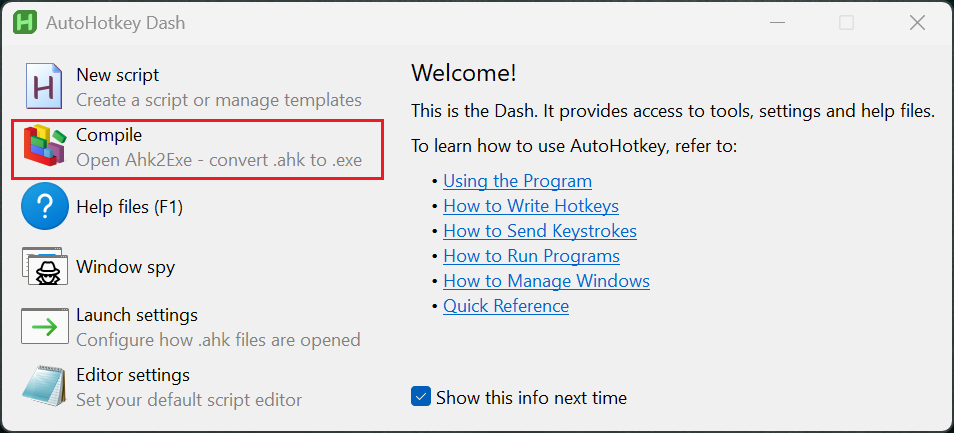Input Timestamp with UTC Offset Using AutoHotkey
Due to that when I writing a blog (hosted on Jekyll website), I need to input a date information in Front Matter block, to quickly input current time (i.e., timestamp), before I defined an Chinese Pinyin phrase ct as %yyyy%-%MM%-%dd% %HH%:%mm%:%ss% -0400 in Microsoft Pinyin Input Methods1 according to walterlv’s blog2. However, this method has two problems:
- The time zone information, i.e., zero UTC offset3
-0400is fixed, because this is no way, like using variables in%yyyy%-%MM%-%dd% %HH%:%mm%:%ss%, to obtain this information from Windows system in Microsoft Pinyin Input Method. So, if I move to another time zone, I need to modify this self-defined phrase again. - As reported in walterlv’s blog2 (actually I ever found this bug before), once above phrase
ctis defined with time variables, if I edit this phrase next time, variables won’t work any more — it will become a fixed time — I need to redefine this phrase using variables again.
Today (2:00 am, Sunday, November 2, 2025), the time of NY state changed from EST to EDT, i.e., 1 hour backward34; I have to modify the UTC offset from -0400 to -0500 accordingly, so above two problems annoyed me again.
As mentioned, actually there is no a variable corresponding to UTC offset in MS Pinyin input, so I have to find another method. Finally, I decided to use software AutoHotkey5.
A Reddit user provides such a way6, i.e., using a shortcut key Win+; to input the timestamp:
1
2
3
#;::{
SendText(FormatTime(,"ShortDate"))
}
Or,
1
2
3
#;::{
SendText(FormatTime(,"yyyy-MM-dd HH:mm:ss"))
}
(btw, this is an AutoHotkey v2.0 script.) where the FormatTime function7 is used to input current time using a certain time form. However, again, the FormatTime per se doesn’t support UTC offset. Then, I found a very elegant way to add offset (other methods I found are much more complicated and I couldn’t understand)8:
1
2
3
4
5
6
7
8
9
10
11
^!v::
FormatTime, CurrentDateTime,, dd/MM/yyyy - hh:mm:ss
time:=A_Now
EnvSub, time, A_NowUTC, Hours
SendRaw Jitendra - %CurrentDateTime%(GMT
if time>0
sendraw +%time%
if time<0
sendraw %time%
sendraw )
Return
which uses current local time time minus UTC time A_NowUTC to obtain the offset (and return it to) time in format Hours, and then display it using text after some post-procession. Next, I used ChatGPT to simplify it as:
1
2
3
4
5
6
7
8
9
10
11
12
13
#;::
FormatTime, CurrentDateTime,, yyyy-MM-dd HH:mm:ss
time:=A_Now
EnvSub, time, A_NowUTC, Hours
sign := (time >= 0) ? "+" : "-"
absH := Abs(time)
hh := (absH < 10) ? "0" . absH : absH
tz := sign . hh . "00"
textInfo := CurrentDateTime . " " . tz
SendInput {Text}%textInfo%
Return
Note: This is a v1.1 version script, and we should download AutoHotkey v1.1 although it is deprecated.
At this time, if I use shortcut key Win+;, I’ll get:
1
2025-11-02 13:37:04 -0500
Beautiful!
There are two points should be noted:
- In the second line, note there are two commas between
CurrentDateTimeandyyyy-MM-dd HH:mm:ss, because time format is the third parameter ofFormatTimefunction; - At last, use
{Text}to output timestamp in pure text. Otherwise, if I useWin+;under the Pinyin input method, the colon will be full-width (Chinese colon).
Nov. 3, 2025
By the way, to make above script, ct.ahk, automatic startup when turning on computer, we should convert it into a .exe program:

and move it to the folder C:\ProgramData\Microsoft\Windows\Start Menu\Programs\Startup.9
References
-
Three GitHub Repo Timestamps Obtained through REST API:
created_at,updated_at, andpushed_at(including a simple introduction to ISO 8601). ˄ ˄2 -
Daylight Saving Time Changes 2025 in New York, New York, USA. ˄
-
https://www.reddit.com/r/Windows11/comments/1c10ij0/comment/kz0tjgh/?utm_source=share&utm_medium=web3x&utm_name=web3xcss&utm_term=1&utm_content=share_button. ˄
-
win10自定义快捷键 &开机自启动—autohotkey实现快捷键上下左右(60键小键盘福利)_autohotkey设置wasd为上下左右. ˄